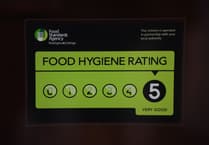COUNCILS all over Devon are putting the final pieces into what one Town Hall leader has described as the toughest jigsaw he has ever seen.
In November all of the county’s local authorities will tell the government what they want to do when local councils are re-organised from 2028.
The plan from Westminster is to do away with a level of local government entirely, with large unitary councils taking on the roles currently held by county and district councils.
All of Devon’s second-tier and unitary councils will cease to exist in their current forms.
The government would dearly like all councils to agree on their future structures, and hand in a document on which they all agree.
The government will announce its decision in the late spring or early summer next year.
Now council leaders are also beginning to have their doubts about the timetable, fearing that the recent cabinet reshuffle might cause the scheduled dates to drag.
Deputy Prime Minister Angela Rayner and local government minister Jim McMahon both left their roles this week, having both been fervent advocates of revamping the council system.
Another local government minister – Steve Reed – has been found, but the role of deputy PM is still up for grabs.
Torbay Council’s chief executive Anne-Marie Bond told a meeting this week that it was too early to say what the reshuffle would mean for the project, but the bay’s Liberal Democrat MP Steve Darling said: ‘I wonder if it might slip because there are more important issues for the body politic in Westminster.’
Among the possible permutations are:
Torbay and an expanded Plymouth remaining as unitary authorities, with Exeter and the rest of Devon becoming a third unitary.
Plymouth would expand to absorb a dozen parishes in the South Hams and West Devon.
Torbay may have to expand into parts of the Teignbridge and the South Hams to achieve the required population numbers.
The ‘1-4-5’ model originally favoured by all of the county’s rural district councils where Plymouth remains as the ‘one’ unitary; Torbay, Teignbridge, South Hams and West Devon form the ‘four’ for a second unitary while Exeter, East Devon, Mid Devon, North Devon and Torridge form the ‘five’ to make a third.
An expanded Plymouth remains as unitary, while Exeter spreads out into parts of East Devon and Teignbridge to become a second large unitary. Torbay and the rest of Devon make up the third.
North Devon District Council has been debating another permutation, which would leave Plymouth as it is while setting up a council for Northern Devon with Barnstaple as its hub, and a separate authority for the south of the county, with its hub in Exeter.
In Torbay just over 1,400 people responded to consultations, and 64 per cent of those favoured the bay staying as it is.
Around two thirds of the remainder favoured an expanded Torbay roughly following the boundaries of the current NHS health trust area.
Almost all the rest favoured the ‘1-4-5’ layout, and there was almost no support at all for a single large Devon council.
Two thirds of the people who responded were aged 55 or over.
Torbay Council leader David Thomas (Con, Preston) said: ‘There are a lot of conversations going on across the region right now, around he we can make these conflicting plans into a jigsaw in some way.
‘We’ll never be able to please everybody, but can we get somewhere across the region where we can say 80 per cent of people think this is the right look?
‘This is going to be the trickiest piece of work, but we have been challenged to do it, and we will get there.’
As the timetable stands at the moment, council submissions will go to the government at the end of November.
After the decision is announced in mid-2026 there will be elections to a new ‘shadow’ authority in May 2027, with those elected councillors taking over a new-shape Devon in May 2028.




Comments
This article has no comments yet. Be the first to leave a comment.